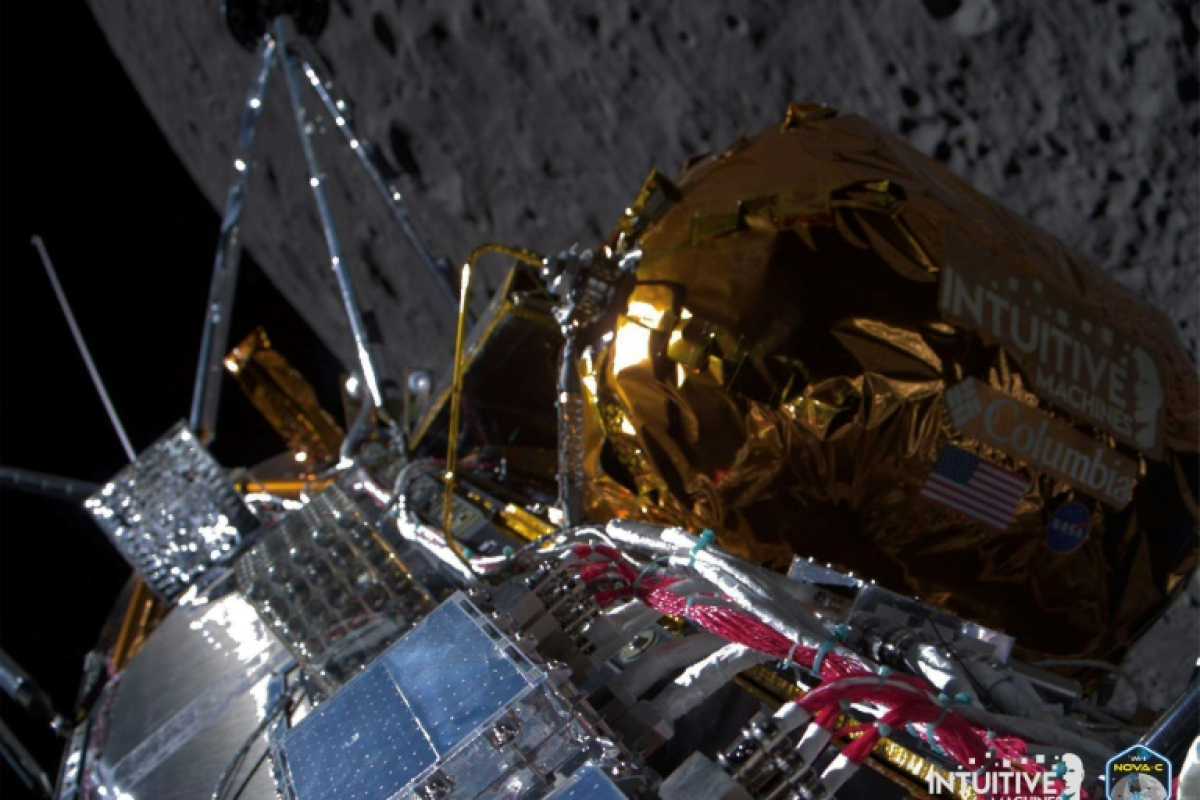A company is preparing to attempt the first American moon landing since Apollo – 02/22/2024 6:29 pm.

The lander of the American company Intuitive Machines against the surface of the Moon, in an image released by the company on February 21, 2024 (Intuitive Machines / Handout)
Crash, or soft landing? Texan company Intuitive Machines will attempt to carry out the first moon landing of an American probe in more than 50 years on Thursday, becoming the first private company to successfully complete the maneuver at the same time.
The planned time of the moon landing has been brought forward to 3:24 pm Houston time, where the company’s control room is located (9:24 pm GMT).
A maneuver was conducted overnight Wednesday into Thursday to correct the probe’s altitude in relation to the lunar surface, Intuitive Machines explained.
The Nova-C lander, which primarily transports NASA’s scientific instruments, measures a little over four meters tall. It took off from Florida last week and entered lunar orbit on Wednesday.
A fully automated descent will begin approximately one hour prior to landing. The event can be followed live on the company and NASA websites.
Cameras and lasers will allow the device to be guided in real time. At a height of 30 meters, the final, vertical descent will begin.
Schematic of the Nova-C class Odysseus lander by Intuitive Machines, part of NASA’s Artemis program to return to the Moon and establish a permanent base there (AFP/Gal ROMA)
At this moment, a small machine equipped with a camera developed by Embry-Riddle Aeronautical University will be launched from the moon to capture the big moment from the outside.
Using its engines, Nova-C would have to reduce its speed from 1,800 meters per second to one meter per second by the time it touches the ground six feet.
The success is not only a major milestone for the private space sector, but also marks the first landing of an American probe on the Moon since the end of the legendary Apollo program in 1972.
After the Soviet Union, the United States and China, India and Japan recently managed to land there thanks to their national space agencies, becoming the fourth and fifth countries to do so.
But many companies – Israeli, Japanese and American – have so far failed to reproduce the same feat.
Russia also missed landing on the moon this summer.
– Moon South Pole –
Earth taken by the Intuitive Machines lunar probe, which attempts to land on the Moon on Thursday (Intuitive Machines / Handout)
The location the intuitive machines are targeting is about 300 kilometers from the moon’s south pole. The crater to serve as the landing strip is named Malapert after a 17th century astronomer.
The lunar south pole is interesting because there is water in the form of ice, which can be used.
NASA wants to send its astronauts there from 2026 with its Artemis mission.
It is specifically to prepare for this mission that she wants to study the region more closely.
To do this, it uses its brand new program, called CLPS (for “Commercial Lunar Payload Services”). Instead of developing ships for the moon, the American space agency ordered private companies to take its scientific equipment there.
Intuitive Machines is one of the selected companies and its contract with NASA for this first mission called IM-1 is worth 118 million dollars.
Landing sites for probes and manned spacecraft on the Moon (AFP/)
The aim is to reduce costs for the public agency, to be able to make more frequent trips, but also to develop the lunar economy. And this is despite the risks of failure.
The program’s first mission, led by American company Astrobotic, failed to reach the moon last month.
– Seven Days Activity –
The Intuitive Machines moon landing craft, a prototype named Odysseus for this mission, carried six private cargo. Among them: sculptures by contemporary artist Jeff Koons representing the phases of the moon.
A February 7, 2024 NASA photo of the Nova-C lander at Kennedy Space Center, Florida (NASA/SpaceX/Handout)
Six of NASA’s scientific instruments on board are focusing on initial observations of this still little-explored region.
Cameras placed beneath the moon will analyze the estimated amount of dust during the landing, to compare it with the Apollo moon landing.
Another instrument will study the lunar plasma (a layer of electrically charged gas) and measure radio waves coming from the Sun and other planets.
Odysseus, powered by his solar panels, must operate for about seven days from the moment of his landing before night falls on the moon’s south pole.





